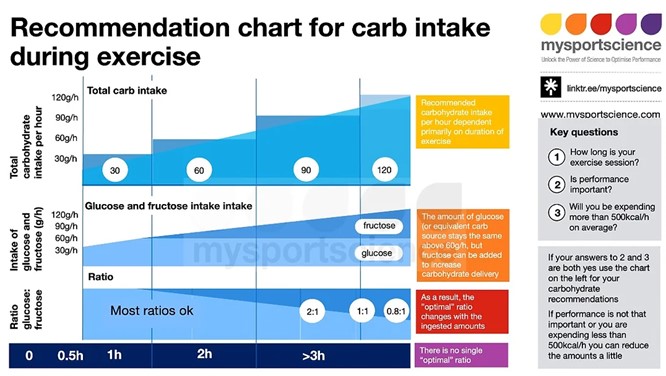Pre-plan your race-day nutrition
Nutrition, July 02, 2024
Although targeted towards endurance events like triathlon the articles nutrition and hydration research basis can be tailored to other endurance sports events too.

For all tri-race distances, but at least Standard Distance (1.5/40/10) and above, you will need a well-thought-out nutrition and hydration plan for race day (and well-practiced during training). This includes being well hydrated, with topped-up ‘fuel’ tank pre-race too! A little preplanning ahead of time can mean the difference between, DNF, finishing comfortably or a podium finish.
With 40+ years of racing and coaching experience (from super sprint all the way through ultra-distance), I have a well-established hydration and nutrition plan that includes things like; ‘hope for the best but having options if the worst happens (and it has!), well-practiced during training (and understanding weather and pacing variables), my preference is to try to be reasonably self-sufficient on course, and only use aid stations for water and any ‘last ditch’ extra nutrition that may be needed (e.g., if the worst happens).
The science
Recent studies have enhanced our knowledge around the need for well-practiced endurance sports hydration and nutrition - Before - During – After, with during races, best outcomes revolve around, Early – Little – Often.
For events and training lasting less than 60 minutes, no carbohydrate ingestion is required however water may be needed depending on weather conditions. For activities lasting over 60 minutes, an active fueling and electrolyte strategy is recommended to maximise performance and support recovery. For exercise lasting 60-150 minutes, you should consume 45–60 grams of carbohydrate per hour, Examples: using a 6–8% solution (concentrations typically found in commercial 600ml sports drinks - for powders read the label!) or two 30 =/-grams (carb) gels per hour. For exercise lasting over 150 minutes, higher carbohydrate intakes of 60–80 grams per hour, or even 90+ grams per hour (if stomach tolerable – but more is not always better!), to supports replenishing glycogen stores and improved performance.
Training and competing at high intensity and in heat increases your metabolism requiring high carbohydrate intake. New research, on endurance runners and triathletes, suggests consuming every 10–15 min to maximally spare glycogen stores (body fuel) and that - regardless of your competitive level – fuel early, fuel little (at a time) and fuel often. This lends itself to sports drinks but also effective with gels, chews, and sports bars on the bike too (with added water). Take away is that you need to start out fueled, refuel often and practice during training to ensure your gut tolerates what you are consuming.
Practical race-day tips:
- The two biggest mistakes I see athletes make are 1. Not having a pre-race hydration and nutrition plan, and 2. Having a plan and not actually using it!
- If you like what you eat and drink during training, you’re more likely to consume sufficient ‘fuel’ during a race! Find something you enjoy or at least tolerate, not something simply because the pros consume it. I prefer a little variety - sports drink, bars, gels, chews, and bananas.
- For sprint and below, during the race, water’s likely the only thing you will need. Standard distance, definably water or even sports drink on the bike and maybe a gel on the run.
- For half and full distance events, you may want to consider using the race organised on-course hydration and nutrition on offer and practice well before during training. This may not be practical if you’re competing in events that don’t all use the same products or you simply can’t tolerate them (i.e., they upset your stomach).
- For longer events, race organisers may allow ‘special needs’ bags (Few organisers will return unused special needs bags).
- Race belts on the run, that hold your race number and gels are good or using a bum-bag.
- Consider your racing pace, weather conditions, and required nutrition quantities based on your weight, and type that works best for you (i.e., established during other low priority races and training), as higher intensities, or hot and humid weather will impact what your body can tolerate.
- In longer events you may prefer the taste of, and tolerate cola, as a pick-me-up, however it’s best to use in the last third of the run.
- Have something in your race bag, or with your ‘race’ support (i.e., partner) to consume ASAP post-race to kickstart your recovery nutrition. Quality recovery foods aren't a priority for most race organisers, so it's usually a rehash of sponsors products.
As always, your daily eating and drinking habits impact not only your sporting activities, but your physical wellbeing too – so, don’t lose sight of enjoying what you consume – all things in moderation!
